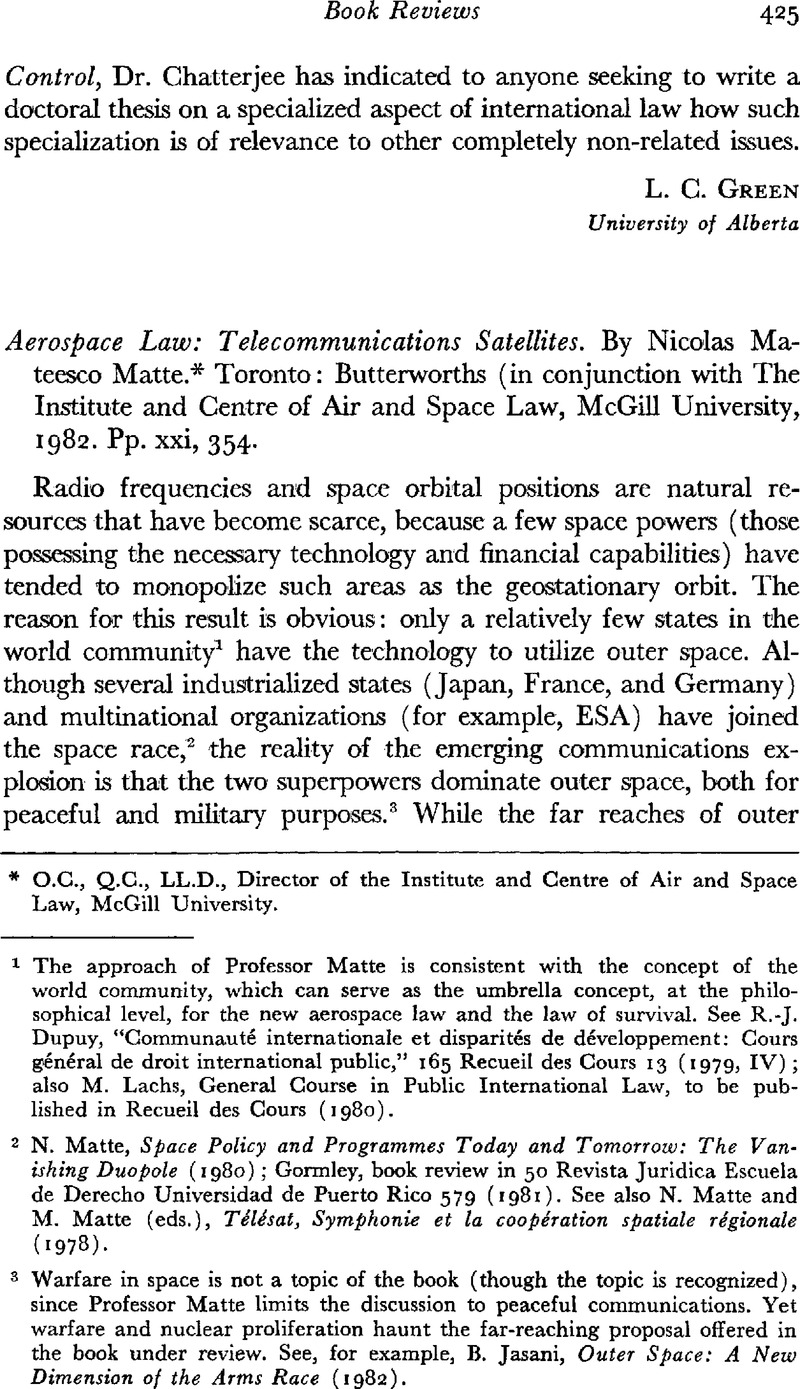No CrossRef data available.
Article contents
Aerospace Law: Telecommunications Satellites. By Nicolas Mateesco Matte. Toronto: Butterworths (in conjunction with The Institute and Centre of Air and Space Law, McGill University, 1982. Pp. xxi, 354.
Published online by Cambridge University Press: 09 March 2016
Abstract

- Type
- Book Reviews/Revue des livres
- Information
- Canadian Yearbook of International Law/Annuaire canadien de droit international , Volume 21 , 1984 , pp. 425 - 429
- Copyright
- Copyright © The Canadian Council on International Law / Conseil Canadien de Droit International, representing the Board of Editors, Canadian Yearbook of International Law / Comité de Rédaction, Annuaire Canadien de Droit International 1984
References
1 The approach of Professor Matte is consistent with the concept of the world community, which can serve as the umbrella concept, at the philosophical level, for the new aerospace law and the law of survival. See Dupuy, R.-J., “Communauté internationale et disparités de développement: Cours général de droit international public,” 165 Recueil des Cours 13 (1979, IV);Google Scholar also M. Lachs, General Course in Public International Law, to be published in Recueil des Cours (1980).
2 Matte, N., Space Policy and Programmes Today and Tomorrow: The Vanishing Duopole (1980);Google Scholar Gormley, book review in 50 Revista Juridica Escuela de Derecho Universidad de Puerto Rico 579 (1981). See also Matte, N. and Matte, M. (eds.), Télésat, Symphonie et la coopération spatiale régionale (1978).Google Scholar
3 Warfare in space is not a topic of the book (though the topic is recognized), since Professor Matte limits the discussion to peaceful communications. Yet warfare and nuclear proliferation haunt the far-reaching proposal offered in the book under review. See, for example, Jasani, B., Outer Space: A New Dimension of the Arms Race (1982).Google Scholar
4 Matte, N., Aerospace Law: Telecommunications Satellites, xxi (1982) [hereinafter cited as Aerospace Law].Google Scholar
5 Ibid., 13.
8 Ibid.
7 Ibid., 15–59.
8 Ibid., 61–84.
9 Ibid., 62; see also Lachs, M., “The International Law of Outer Space,” 113 Recueil des Cours 1 (1964, III), cited in Aerospace Law 61, n. 1.Google Scholar
10 See “Aerospace Law and Telecommunications Satellites,” in Aerospace Law, 73–84.
11 Ibid., 75.
12 Ibid., 77.
13 See especially, “A Regulatory Regime for the Radio Spectrum,” ibid., 93–102.
14 “Regulation of the Use of the Geostationary Orbit,” ibid., 103–6.


